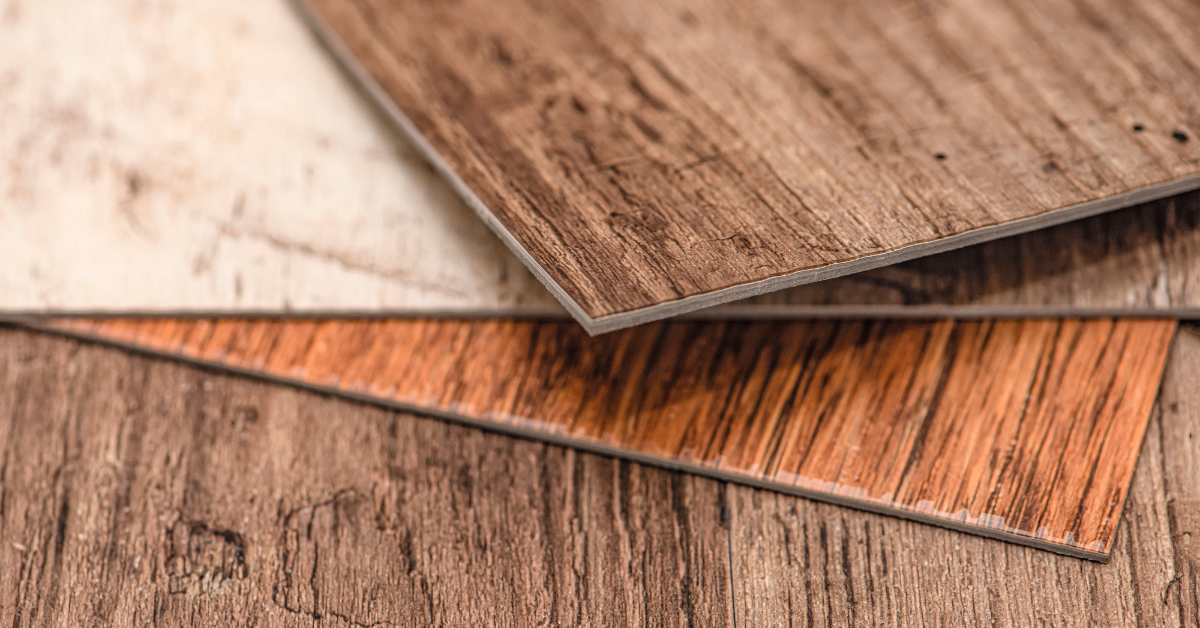Let’s face it – when you’re running a business, flooring decisions probably aren’t keeping you up at night. You’ve got profit margins, staffing headaches, and that one client who still hasn’t paid their invoice from February to worry about. But here’s the thing: that stuff beneath your feet? It matters more than you might think, especially when it comes to your green credentials.
Eco-friendly flooring has come a long way from those early days when “sustainable” was code for “looks a bit naff but hey, we’re saving the planet!” These days, going green underfoot doesn’t mean sacrificing style, durability, or your bank balance. In fact, it might just be one of the smartest business decisions you’ll make this year.
So why should you give a monkey’s about eco-friendly flooring? Let me break it down for you.
It’s Not Just About Hugging Trees (Though That’s Nice Too)
First off, let’s get one thing straight – eco-friendly flooring isn’t just for companies with ‘sustainable’ in their mission statement or those who have office chickens and a compost heap in the car park. It makes solid business sense for everyone, and here’s why:
Your Customers Actually Care About This Stuff
Remember when sustainability was just a buzzword trotted out at board meetings? Those days are long gone, mate. Today’s consumers are increasingly making choices based on environmental impact:
- A whopping 73% of UK consumers say they’re trying to make more sustainable choices now than they were a year ago
- 66% say they wouldn’t buy from a brand that doesn’t have clear sustainability practices
- 48% are willing to pay more for products from companies with strong environmental credentials
When clients or customers walk into your space, your flooring is literally the foundation of their experience. Having eco-friendly options sends a clear message about your values without you having to say a word. It’s like a sustainability signpost that says “we don’t just talk the talk – we walk the walk” (on sustainable flooring, naturally).
Your Team Will Thank You
It’s not just customers who care about your green credentials. The people who spend 40+ hours a week in your space are becoming increasingly eco-conscious too:
- 67% of UK workers say they’re more likely to apply for roles with environmentally responsible companies
- 53% would consider leaving their current job for one at a more environmentally responsible organisation
- 65% say they’d feel more loyal to an employer who genuinely cares about environmental issues
Plus, many eco-friendly flooring options are also better for indoor air quality, which means fewer sick days, better concentration, and happier staff. Win-win-win!
Your Bottom Line Will Love It (Eventually)
I won’t lie to you – some eco-friendly flooring options require a bit more investment upfront. But before you close this tab in horror, hear me out: the long-term savings often make it worth every penny.
Sustainable flooring typically:
- Lasts longer than conventional alternatives
- Requires less maintenance and fewer harsh chemicals
- Often comes with better warranties
- Can reduce energy costs through better insulation
- May qualify for green building tax incentives or improve your BREEAM/LEED ratings
One client of ours, a mid-sized marketing agency in Leeds, actually calculated that their bamboo flooring would work out cheaper than conventional hardwood over a 10-year period, even with the higher initial cost. Smart cookies, that lot.
What Actually Makes Flooring “Eco-Friendly” Anyway?
Before we dive into specific options, let’s clear up what we mean by “eco-friendly” because, let’s be honest, there’s a fair bit of greenwashing out there.
Truly sustainable flooring should tick at least some of these boxes:
- Renewable materials – made from resources that can be replenished within a human lifetime
- Recycled content – incorporating materials that would otherwise end up in landfill
- Low VOCs – minimal volatile organic compounds that can off-gas and affect indoor air quality
- Local sourcing – reducing transport emissions and supporting local economies
- Ethical production – fair wages and safe working conditions throughout the supply chain
- End-of-life plan – can be recycled, repurposed, or biodegraded after use
- Third-party certification – credible verification of environmental claims
The good news? There are plenty of options that hit most of these marks without compromising on style or durability. Let’s check out the contenders.
The Eco-Friendly All-Stars: Your Options
Ready to dip your toes into the world of sustainable flooring? Here are the options making waves in commercial spaces across the UK:
Bamboo: The Rapid Regenerator
Bamboo might look like wood, but it’s actually a grass – and a blooming impressive one at that. It can grow up to 91cm in a single day (I know, bonkers) and reaches maturity in just 3-5 years, compared to 20-120 years for hardwood trees.
The good stuff:
- Incredibly durable – often harder than oak
- Naturally resistant to moisture and pests
- Gorgeous contemporary aesthetic
- Available in a range of colours and finishes
The not-so-good stuff:
- Most bamboo comes from China, so there’s a carbon footprint from shipping
- Quality can vary dramatically between manufacturers
- Some versions use adhesives that contain formaldehyde
Best for: High-traffic areas where you want the look of wood with extra durability. Think reception areas, corridors, and conference rooms.
Cork: Not Just For Your Wine Bottle
Cork comes from the bark of cork oak trees, which regenerates every 9-12 years without harming the tree. It’s like giving the tree a haircut – sustainable and oddly satisfying.
The good stuff:
- Naturally antimicrobial and hypoallergenic
- Excellent sound and thermal insulation
- Feels warm and soft underfoot
- Bounces back from indentations
The not-so-good stuff:
- Can fade in direct sunlight
- Needs resealing every few years
- Not ideal for areas with heavy rolling loads
Best for: Offices where noise reduction matters, or spaces where employees stand for long periods. It’s brilliant for creative agencies, therapy rooms, and anywhere you want a bit of acoustic help.
Reclaimed Wood: Old Dog, New Tricks
Why cut down new trees when there’s perfectly good wood already out there? Reclaimed timber takes wood from old buildings, barns, factories, and even wine barrels and gives it a second life.
The good stuff:
- Each floor is unique and full of character
- Often more stable than new wood as it’s fully seasoned
- Prevents more trees from being felled
- Comes with built-in stories and history
The not-so-good stuff:
- Can be more expensive than virgin timber
- Sometimes limited availability of certain species
- May need more maintenance depending on condition
Best for: Brand-forward spaces where you want to make a statement. Think boutique retail, hospitality, or creative studios where character and storytelling matter.
Linoleum (Not Vinyl!): The Comeback Kid
Real linoleum (not to be confused with vinyl) is made from linseed oil, pine resin, wood flour, cork dust, and mineral fillers on a jute backing. It’s basically the sourdough of flooring – made from simple, natural ingredients.
The good stuff:
- Naturally antibacterial and biodegradable
- Extremely durable (can last 40+ years)
- Available in endless colours and patterns
- Low maintenance and easy to repair
The not-so-good stuff:
- Can be damaged by harsh chemicals and standing water
- May yellow slightly if exposed to constant sunlight
- Initial linseed oil smell that dissipates over time
Best for: Healthcare environments, educational facilities, and retail spaces where you need durability and easy maintenance with a pop of colour.
Wool Carpet: The Cosy Classic
You know what’s brilliant about wool? It grows back. Sheep get a haircut, we get gorgeous carpet, everyone’s happy. Plus, it’s naturally flame-retardant, which is always a bonus in commercial spaces.
The good stuff:
- Incredible durability – can last decades with proper care
- Natural stain resistance
- Excellent thermal insulation
- Biodegradable at end of life
The not-so-good stuff:
- Higher initial cost than synthetic options
- Can be susceptible to moth damage if not properly maintained
- May require professional cleaning
Best for: Executive offices, meeting rooms, and anywhere you want to create a sense of luxury and comfort.
Bio-Based LVT: The New Kid on the Block
Traditional LVT (Luxury Vinyl Tile) isn’t exactly eco-friendly, but new bio-based versions replace up to 50% of petroleum-based materials with plant-derived alternatives. It’s not perfect, but it’s a step in the right direction.
The good stuff:
- More sustainable than traditional vinyl
- Extremely durable and waterproof
- Easy to install and maintain
- Available in designs that mimic wood, stone, and more
The not-so-good stuff:
- Still contains some petroleum-based materials
- End-of-life recycling can be challenging
- Variable quality between manufacturers
Best for: Areas where moisture resistance is crucial, like entrances, kitchenettes, and washrooms.
Real Talk: Challenges and Considerations
I wouldn’t be doing my job properly if I didn’t acknowledge that going green with your flooring isn’t always straightforward. Here are some honest challenges to consider:
The Budget Balancing Act
Let’s address the elephant in the room – many (but not all) eco-friendly options come with a higher upfront cost. This is where thinking long-term comes in handy. That extra £5 per square metre might seem steep now, but if the flooring lasts twice as long as the cheaper alternative, you’re actually saving money in the long run.
Pro tip: Look into whether your sustainable flooring choices might qualify for any green building incentives or improve your energy efficiency ratings, which could offset some costs.
The Authenticity Challenge
With sustainability being such a hot topic, some manufacturers are making green claims that don’t hold water. Look for credible third-party certifications like:
- FSC (Forest Stewardship Council) for wood products
- GreenGuard for indoor air quality
- Global GreenTag for lifecycle assessment
- Cradle to Cradle for circular economy principles
Don’t be afraid to ask tough questions about supply chains, manufacturing processes, and end-of-life options. If a company can’t give you straight answers, that’s a red flag waving frantically in your direction.
The Installation Equation
Even the most eco-friendly flooring can lose its green credentials if installed with toxic adhesives or finishes. Make sure your installation team uses low-VOC or no-VOC products, and ask about take-back schemes for offcuts and packaging.
Some suppliers (like us at Kent Flooring – shameless plug, sorry not sorry) offer comprehensive packages that include eco-friendly installation materials and proper disposal of old flooring, so you don’t have to piece it all together yourself.
Making the Switch: Your Action Plan
Ready to take the plunge into more sustainable flooring? Here’s how to get started without feeling overwhelmed:
1. Start with a Sustainability Audit
Take stock of your current flooring situation:
- What’s working and what isn’t?
- Where is wear and tear most evident?
- Which areas might benefit most from eco-friendly upgrades?
This helps you prioritize where to make changes first, rather than trying to do everything at once.
2. Set Clear Goals
What matters most to your business?
- Reducing carbon footprint?
- Improving indoor air quality?
- Supporting local suppliers?
- Achieving specific green building certifications?
Your priorities will help guide your flooring choices.
3. Consider a Phased Approach
You don’t have to rip up all your flooring at once. Consider:
- Starting with high-visibility areas like reception
- Replacing flooring in areas due for renovation anyway
- Creating a long-term replacement schedule as existing flooring wears out
4. Communicate Your Choices
Once you’ve made the switch, let people know! Your green flooring choices can be:
- Highlighted in your sustainability reporting
- Mentioned in marketing materials
- Explained in office tours or client meetings
- Featured in staff communications
Remember, sustainable flooring isn’t just about the product – it’s about the story it tells about your business values.
The Bottom Line: It’s Worth It
Choosing eco-friendly flooring for your business isn’t just about ticking a green box – it’s a strategic decision that can enhance your brand, please your employees, impress your customers, and potentially save you money in the long run.
The best bit? Unlike some sustainability initiatives that happen behind the scenes, your flooring is visible to everyone who walks through your door. It’s a tangible demonstration of your commitment to the environment that people can literally see and feel.
And let’s be honest – in a world where we’re all increasingly conscious of our environmental impact, every square metre of sustainable flooring makes a difference. Your business might not save the planet single-handedly, but making thoughtful choices about your environmental footprint is always a step in the right direction.




